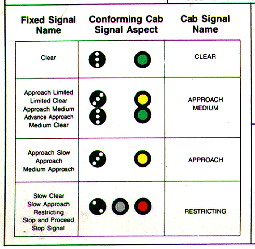For The Transit Fans: Industry Perspectives: Emergency Stop (Rail)
Sometimes accidents happen, but as an opertator of a train with hundreds of lives on board its always up to the driver to be on the lookout for trouble.

Controls of an Amtrak Siemens ACS-64 Sprinter
As is blaringly obvious, train drivers do not have a steering wheel and trains cannot change direction at will, this means that a large part of the train drivers job is observing the tracks ahead and the signals for any signs of danger.
Practice: All railways use some form of signals to alert drivers to any changes to the tracks up ahead, and all trains have a "dead mans switch" a device which must be applied by the driver either at all times or frequent intervals to ensure the driver is awake and medically sound.
For Example with signals:
A Red Signal always universally means danger. Trains must not pass a red signal because of some form of danger beyond it. Ranging from a stopped train ahead to debris on the tracks. Going past a red signal is known as SPAD or Signal Passed At Danger. It is a very serious offense which in some cases leads to criminal charges. In order to pass a signal at danger, the driver must ask permission from the controller for that section of track. If permission to SPAD is granted trains must proceed slowly and at high alert, prepared to stop at any moment.
Always before a Red Signal, there is a Yellow Signal. The Yellow signal is a warning to slow down due to a change in track condition or the next signal. For example, a driver may encounter a yellow signal if the next signal beyond it is also yellow or red. Sometimes a train ahead may be delayed and the signal behind that train will be yellow to slow down all approaching trains. On some railways a "Double Yellow" will appear. Double Yellow signals are used to communicate that the next signal is red or that the train is switching tracks to the other side. Speeds must be greatly reduced to pass a double yellow.
Green Signals (Sometimes White) mean all clear
A test is given to new train drivers in training to asses their knowledge of signals and to make sure they know what to do when approaching them.

Signal Example
Emergency Stop: Trains are equipped with an Emergency Stop or "Brake" which is also sometimes a kill switch. However, before a train driver can push the "red button" a set a parameters must be assessed first and the driver usually only has seconds to decide. Generally the driver must always try to get the attention of surrounding pedestrians, cars, other trains and animals with the use horns, bells, whistles and lights. If the bystanders do not respond to the warning of the approaching train, the driver must asses the risk. Slamming on the brakes while doing 60 MPH can do heavy damage to the trains braking system. If the driver determines that a collision is imminent the driver can hit the emergency brake which applies full brakes, cuts the power (or lowers the pantograph for electric trains, which disconnects power), and sounds the horn.
Emergency Brake Buttons are always Red in color and are visibly marked in multiple languages depending on area of operation it may be in English, Spanish and French.
Amtrak Emergency Stop
Two Girls Playing on the Train Tracks are captured on video by a rail fan. The train driver activates the brakes, unsure if he hit them or not. The girls are then questioned by police and issued a fine for playing on the tracks and playing chicken with a train.




0 Comments
Recommended Comments
There are no comments to display.
Create an account or sign in to comment
You need to be a member in order to leave a comment
Create an account
Sign up for a new account in our community. It's easy!
Join the herd!Sign in
Already have an account? Sign in here.
Sign In Now